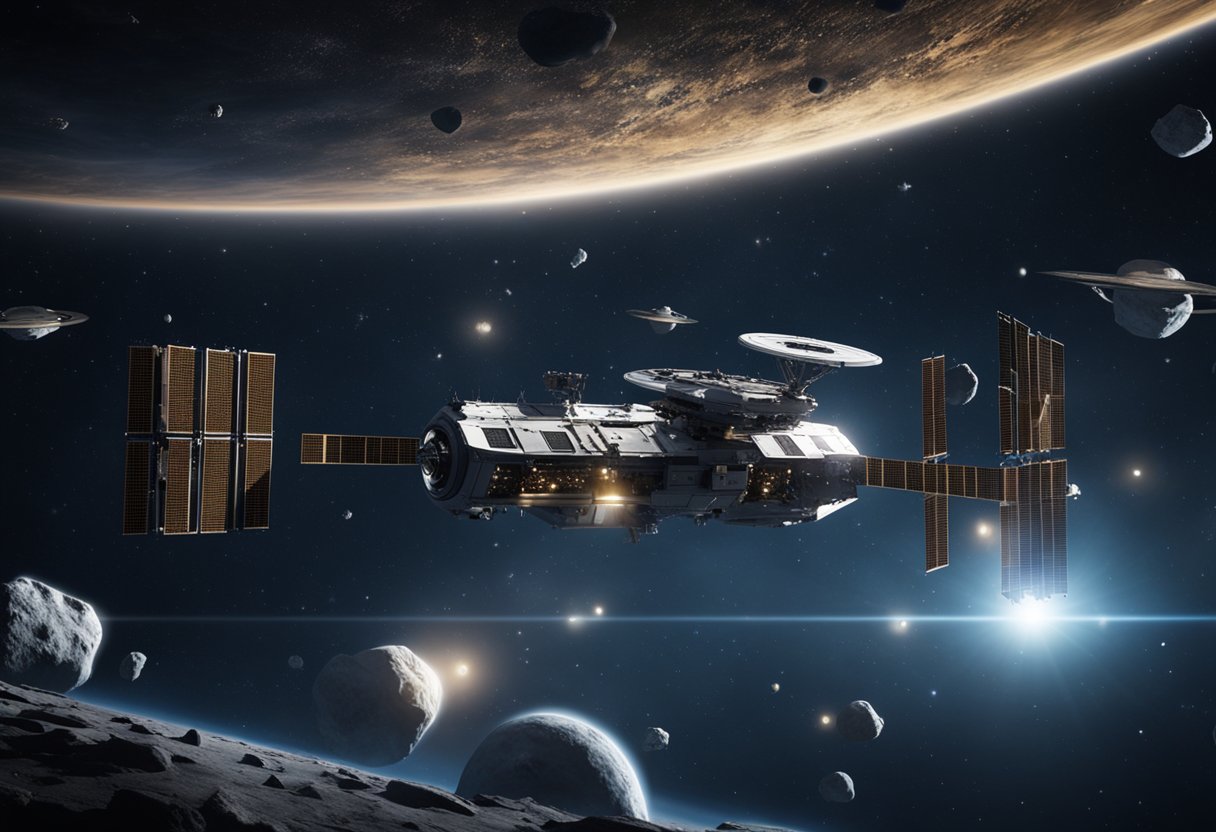
Venturing into the asteroid belt has been one of the major steps in our pursuit of understanding our solar system. The asteroid belt is a vast, torus-shaped region teeming with numerous rocky bodies that lies between the orbits of Mars and Jupiter. Over the years, its exploration has not only piqued scientific curiosity but also posed significant challenges due to its dense and erratic celestial population. As we set our sights on these distant objects, our motivations are driven by the desire to decode the history of our solar system and to assess the potential bounty that these minor planets may hold.
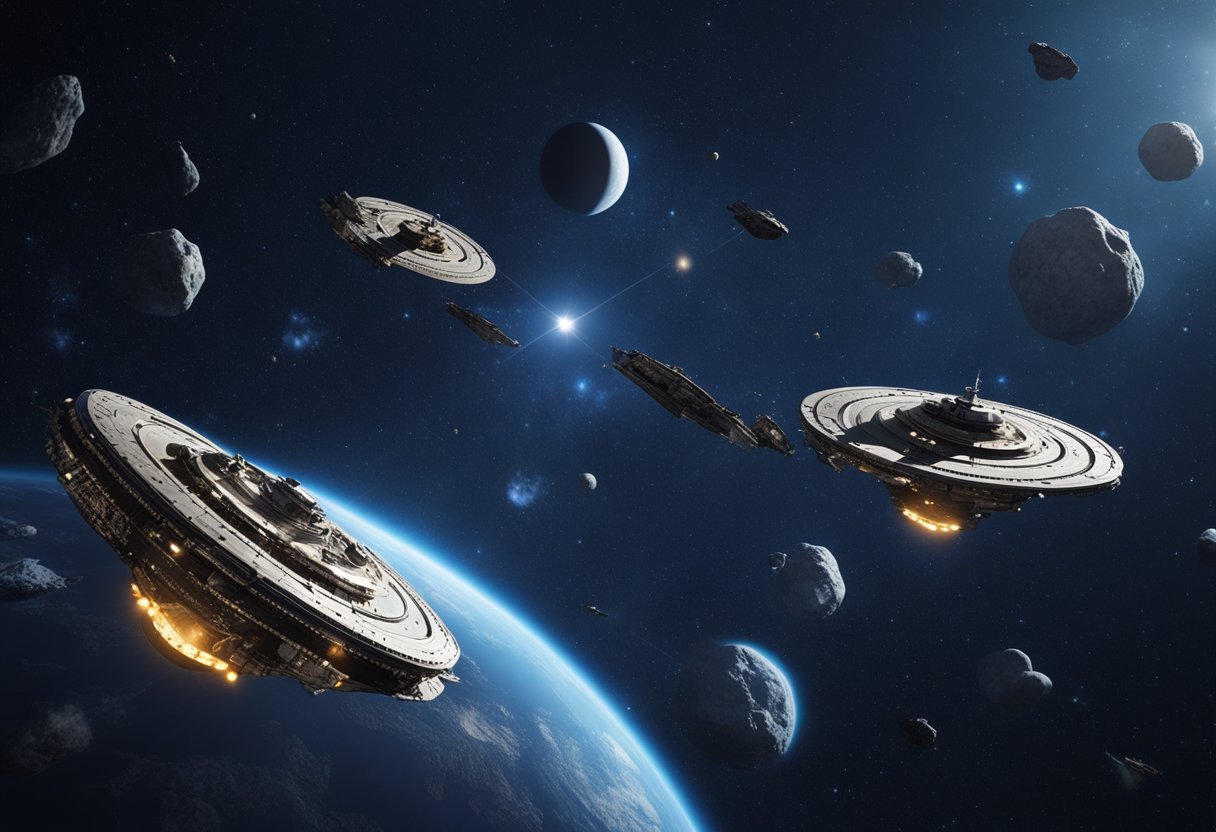
The characteristics and composition of the objects in the asteroid belt vary widely, providing a rich tapestry of data for us to analyse. Investigations into asteroid belt dynamics have yielded considerable insights into the processes that govern celestial mechanics and orbit modelling. Our expeditions to this region, from flybys to sample-return missions, have extended our knowledge of these relics of planetary formation. As we continue to push the boundaries of space exploration, we’re also examining the prospects of using resources from the asteroid belt for both scientific progress and future space endeavours.
Exploring the Asteroid Belt offers us a journey back in time to the formation of the Solar System. We delve into the composition and structure, understanding the realms of our celestial neighbourhood.
The formation of the Asteroid Belt is a tale of the remnants from the nascent solar system. Approximately 4.5 billion years ago, planetesimals—the building blocks of planets—began to coalesce. However, the gravitational influence of nearby Jupiter prevented these planetesimals from forming a larger planet. Today, we see the result as a belt containing millions of asteroids, ranging in size from Ceres, the largest, to dust particles.
The material composition of asteroids in the belt varies, resulting in different classifications. We have the C-type (chondrite) asteroids, composed of clay and silicate rocks, among the oldest objects in the solar system. The S-types (silicate materials) and M-types (metallic) are also present. The structure of the belt is not uniform; it houses objects like Vesta, Pallas, and Hygiea, which possess a significant proportion of the belt’s mass.
The Main Asteroid Belt lies between the orbits of Mars and Jupiter, encapsulating a region rich in history and diversity. To illustrate:
This delineation marks a zone where the largest and most well-known asteroids like Ceres reside, which is also the only dwarf planet within the main belt, and other notable bodies such as Vesta, Pallas, and Hygiea—each with a unique story to tell in the expansive history book of our solar system.
The asteroid belt is a treasure trove for understanding the history and dynamics of our solar system. By examining the gravitational interactions and orbital resonances within this region, we unveil the complex relationship these space rocks share with larger bodies like Jupiter.
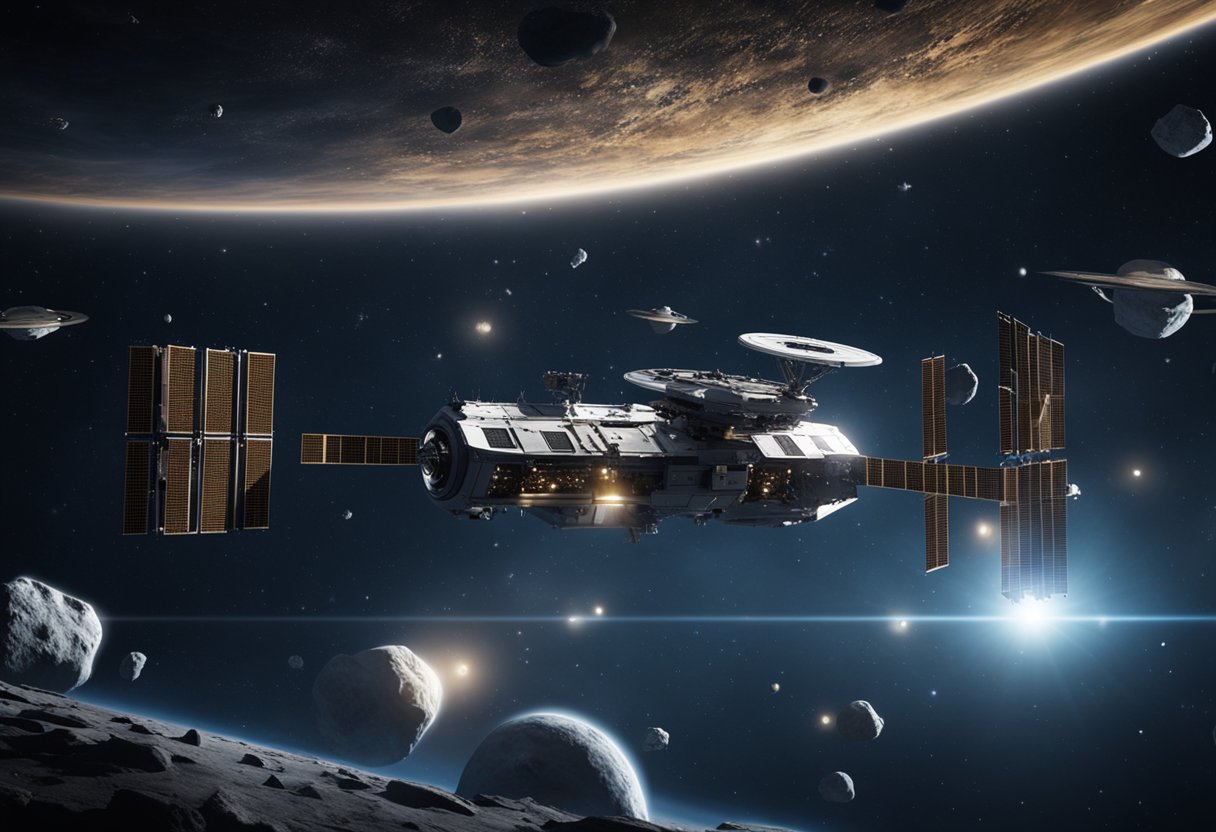
Gravitational forces play a pivotal role in the structure of the asteroid belt. Each asteroid exerts a gravitational pull on its neighbours, resulting in a dynamic system where orbits can change over time. We recognise that the solar system’s giant planets, especially Jupiter, have significant influence on the belt. Their gravity can alter an asteroid’s trajectory, leading to potential collisions or ejections from the belt.
The concept of orbital resonances is crucial to our understanding of the belt’s architecture. An orbital resonance occurs when two bodies exert a regular, periodic gravitational influence on each other as their orbits align. Notably, Jupiter is responsible for what we observe as the Kirkwood Gaps – regions in the belt where asteroids are noticeably scarce. These gaps correspond to the distances from the Sun where asteroids would have an orbital period that is a simple fraction (e.g., 1/3 or 2/5) of Jupiter’s orbit. The repeated gravitational nudges from Jupiter prevent asteroids from residing in these zones, maintaining the structure that astronomers and scientists have come to know through extensive observation.
In this section, we’ll explore the significant milestones and advancements in asteroid belt explorations, from historical achievements to cutting-edge missions poised to unveil the mysteries of our solar system.
Our venture into the asteroid belt continues to evolve with both governmental and private entities taking significant interest:
NASA’s Investigations have not only advanced our understanding of asteroids but also laid the groundwork for future expeditions that hold the promise of unveiling our solar system’s origins:
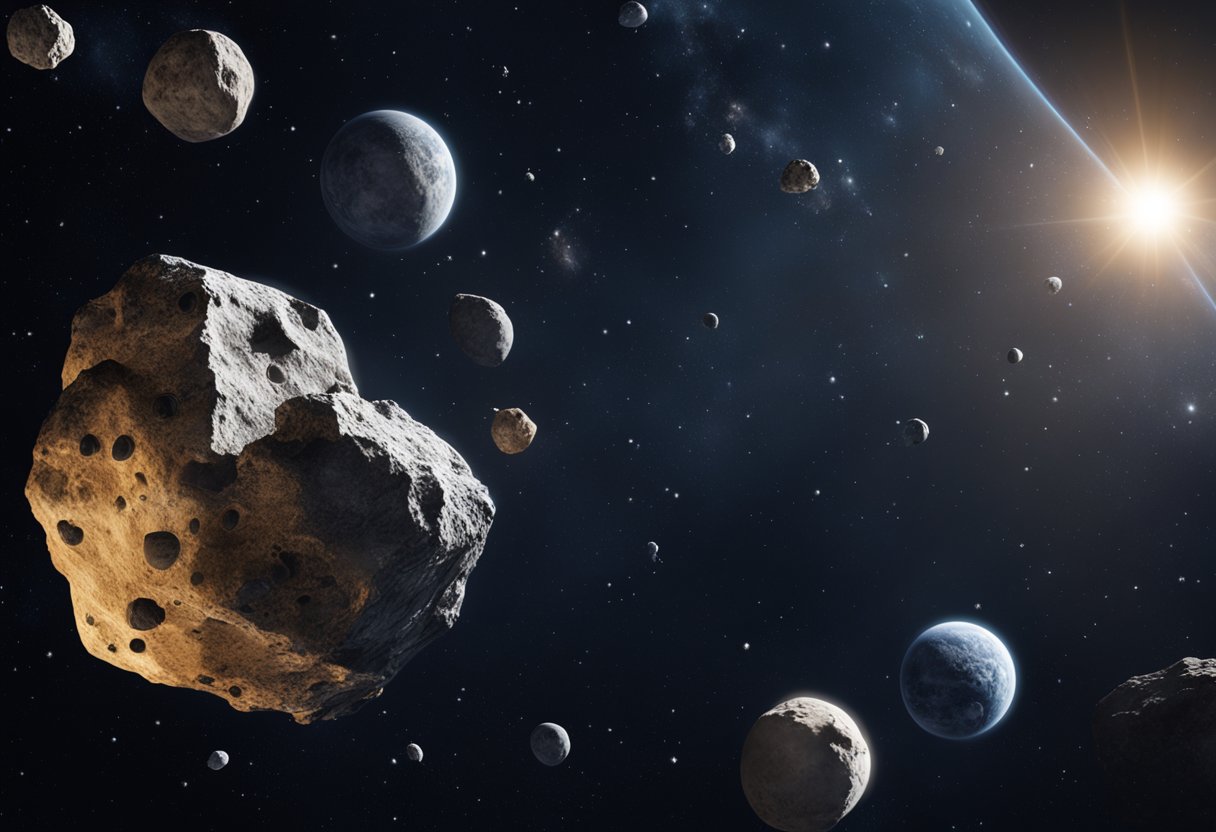
In observing the asteroid belt, we consider several aspects: how mass is distributed among objects, the differing surfaces and compositions they possess, and how they rotate. The asteroid belt is a hive of diversity, with each object presenting unique characteristics that contribute to our understanding of the early solar system.
The asteroid belt possesses a wide range of object sizes, from dust and small rocks to larger asteroids, and the dwarf planet Ceres—the largest object in the belt. Mass distribution among these objects is heavily skewed; Ceres alone comprises approximately 30% of the belt’s estimated total mass of about 4% that of our Moon. Most asteroids are smaller, with a common size being less than a kilometre in diameter. Research has indicated that the size distribution does not significantly differ between the inner, middle, and outer regions of the belt for objects ranging from 0.1 to 1 km in diameter.
Asteroid surfaces exhibit a wide range of compositional types, primarily C-type (carbonaceous), S-type (silicate), and M-type (metallic). The C-type asteroids are the most prevalent, composed of clay and silicate rocks, typically very ancient and dark due to their material makeup. In contrast, S-type asteroids tend to consist of silicate materials and nickel-iron. The composition of an asteroid informs us about the temperature and conditions present in the solar system at the time of its formation. Ceres, for instance, showcases signs of water ice, suggesting a possibility of cryovolcanism.
The rotational dynamics of asteroids within the belt vary widely. Their rotations can provide insights into their internal structures and collisional histories. Many asteroids rotate relatively quickly, within a range of a few hours, but some exhibit slower rotations that may be the result of past collisions or interaction with other celestial bodies. The study of an asteroid’s rotation can reveal whether it is a monolithic block or a “rubble pile” held together by gravity.
Our understanding of these objects guides our approach to planning expeditions within the belt, such as those detailed on SpaceVoyageVentures.com, where the potential for future space tourism trips is explored.
In the realm of asteroid belt expeditions, understanding the nuances of celestial mechanics and orbit modelling is imperative. It enables us to calculate intricate orbital paths and predict the movements of asteroids with precision.
We utilise mathematical models to calculate orbits within the solar system. These models are grounded in the laws of physics that dictate gravitational forces between objects in space. By incorporating the mass of planets and asteroids and their relative positions, we create a model that can reflect the actual paths these bodies traverse in space. The calculations involve complex differential equations, which we solve using numerical methods, for the practical planning of mission trajectories.
Predicting asteroid movements is a vital aspect of ensuring the safety and success of space endeavours. By observing the positions of asteroids over time, we construct elaborate predictive models. These models assist us in forecasting an asteroid’s future position and path. This predictive capability is not only vital for avoiding collisions but also critical for planning slingshot manoeuvres and landing missions on these nomadic celestial bodies.
By mastering celestial mechanics and orbit modelling, we underpin the successful navigation through our solar system’s asteroid belt. Our growing expertise informs the exciting prospects detailed on SpaceVoyageVentures.com, illuminating the path for both current and future asteroid expeditions.
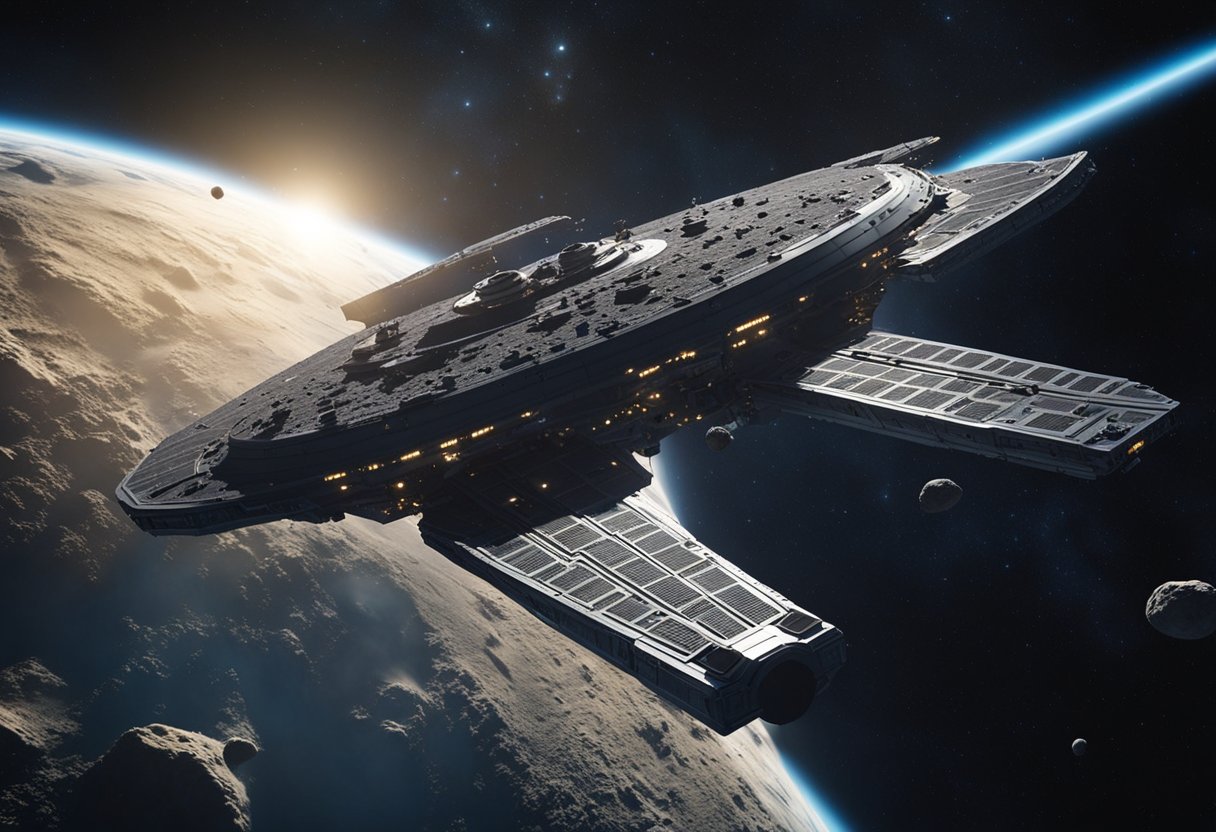
We’ve compiled a list of the most pertinent questions related to human expeditions to the asteroid belt, including the science of asteroid gravity, NASA’s initiatives, and the logistics of navigating the vast and rocky expanse between Mars and Jupiter.
The journey to the asteroid belt has been a topic of much planning and preparation. As of now, no human expeditions to the asteroid belt have occurred. However, efforts such as SpaceVoyageVentures.com are documenting future possibilities for space tourism, which might include trips to the asteroid belt.
The gravity of an asteroid is significantly less than that of Earth, often just a fraction of a percent. This means that on an asteroid, one would feel much lighter and objects would fall to the surface much more slowly.
To date, NASA has not embarked on asteroid mining projects. However, NASA recognises asteroid mining as a potential avenue for resource acquisition in future space endeavours.
Estimates suggest there are over a million celestial bodies within the asteroid belt, ranging from small rocks to dwarf planets like Ceres.
Several robotic missions have explored the asteroid belt, such as NASA’s Dawn spacecraft, which extensively studied the large asteroids Vesta and Ceres.
The asteroid belt lies approximately 329.1 million to 478.7 million kilometres from Earth. Despite its dense appearance in science fiction, the asteroid belt is mostly empty space, and spacecraft can navigate through it with relative safety.